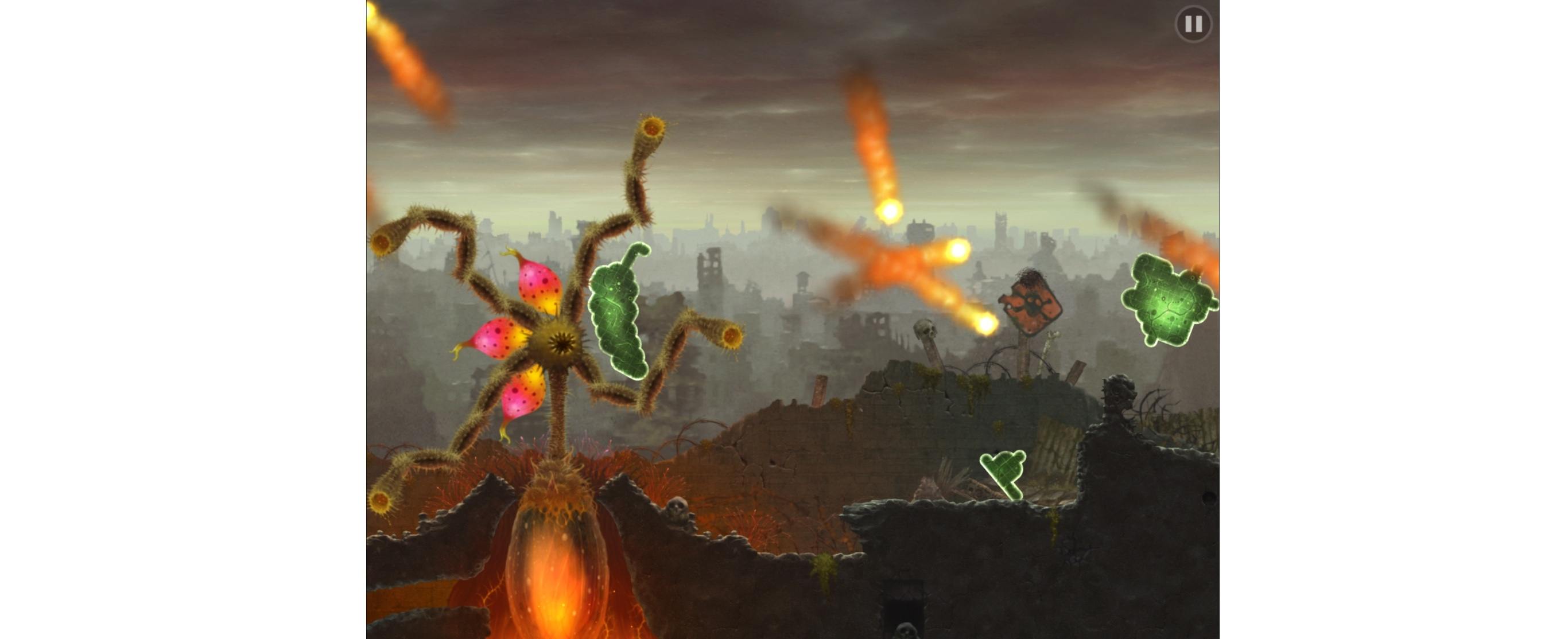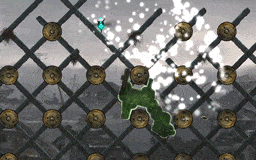Chicago-based Untame released Mushroom 11 on iOS this week as part of Apple’s Celebrating Indie Games promotion. Mushroom 11 started as a PC game, but its unique gameplay works especially well in a touch environment. You play as a green blob of goo in a post-apocalyptic world populated by mushrooms, glowing jellyfish-like creatures, and the ruins of the present world. To get around you erase behind the blob, which regenerates on the opposite side. It’s a novel mechanic that forces you to approach the game’s challenges in a different way. The result is perplexing and fun.
The mechanic for moving your blob through the ruins of the world is fascinating. It feels a little like you are pushing your blob along the ground, but you’re not. Instead, you erase part of the blob, which regrows on its opposite side, advancing somewhat haphazardly through the world.
The distinction between pushing and erasing is important because there are moments in the game where the destructive element of the gameplay is critical. For instance, early on, you learn that you can split your blob with a swipe leaving part behind to hold down a switch so the rest can make it through a gate held open by the part you abandoned. However, if you slice off a piece that’s too small, you many not have enough goo to get past the gate because the regeneration of the blob doesn’t happen at the same rate as its destruction.
The size of your blob ebbs and flows as you play. Catching mushrooms and flying creatures will help you grow, while the act of moving through the landscape and obstacles like lava pits will shrink you. Managing the size of your organism adds a unique element to Mushroom 11 that sets it apart from similar games.
Underlying the unusual game mechanics, Mushroom 11 presents more typical challenges. There are elements of platform and puzzle games such as triggering switches to open doors, carefully timed movements to avoid being dropped into lava pits, and periodic boss battles. But even the familiar aspects of the game feel different when the only way you have to get around obstacles is the crude and imprecise tools of erasing part of your blob.
Experimentation is key in Mushroom 11. The tutorial at the beginning of the game is limited, which is for the best because the surprising control scheme and discovery of how you can use it to your advantage are a big part of why the game is fun. Add to that an eerie post-apocalyptic landscape that is beautifully rendered and a fitting soundtrack that adds to the atmosphere without being overwhelmingly bleak or foreboding, and you’ve got an excellent touch-based game that I’m surprised wasn’t built originally for mobile platforms.
Mushroom 11 is available on the App Store and is featured in its new indie games section.



